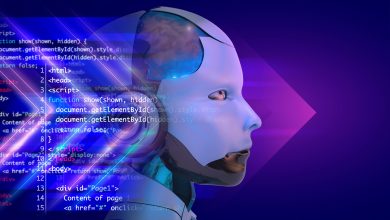
While AI holds immense potential, its adoption requires CIOs to rethink not just how they use AI, but also how AI fits within their broader enterprise ecosystem. The key to successfully navigating this transformation lies in understanding AI’s true capabilities and leveraging them to create value that transcends traditional thinking. Here are 3 ways to think differently about Enterprise AI:
1. Stop Treating AI Like Human Intelligence
For decades, we’ve built AI systems on the premise that they should mimic human-like intelligence. Yet, the Context is All You Need paper from 2017—which led to the development of large language models (LLMs)—opened a new chapter in AI. LLMs are fundamentally different from human cognition in one crucial way: they can manage vast, complex contexts across multiple domains in a way that humans can’t.
Consider a novel: an AI model can connect information from Page 1 to Page 282 and even cross-reference it with content in Volume 3 of the series. This is something few humans can do with the same speed and precision, as our cognitive load is limited. The real breakthrough of LLMs lies in their ability to handle massive context windows—such as the hundreds of billions of parameters that power modern AI.
However, the enterprise approach to AI has largely been “paving the cowpath.” Companies often try to shoehorn AI into existing processes, solving for narrow use cases instead of rethinking how AI can enable radically new possibilities. AI is frequently confined to isolated use cases that improve efficiency but miss the opportunity to integrate across silos.
The missed opportunity here is significant: AI isn’t just a tool to replace human labor—it’s an opportunity to rethink how work is structured and how systems can interconnect. For example, in software development, we’ve seen tools like GitHub Copilot help coders write more efficiently, but AI should transcend the developer persona and bridge the entire software development lifecycle (SDLC). Tools like Publicis Sapient’s Slingshot integrate and aggregate context from across the SDLC, creating end-to-end automation that connects strategy, product, design, development, testing, and beyond.
By focusing not just on individual use cases but on building enterprise context as a shared, open asset, CIOs can unlock new opportunities across processes, creating value that spans organizational silos and extends into future business needs.
2. Yes, AI Does Give You a “Free Lunch”
It’s often said that the quality of data fed into an AI system determines the quality of the output. While this is true, there’s an underappreciated aspect of AI’s power: the vast knowledge embedded in pre-trained models. LLMs have already been trained on enormous datasets that encompass general knowledge about the world, from internet texts to books and beyond.
Consider a couple of our client examples. Marriott Homes and Villas use AI to provide intuitive, natural language searches: “Find me a pet-friendly A-frame home close to the beach and mountains.” This search isn’t just relying on the company’s internal data; it’s tapping into the broad knowledge embedded in the LLMs themselves. Similarly, we helped a grocery retailer client of ours leverage an LLM to enhance substitution recommendations. By analyzing a customer’s cart, the AI inferred the dish they were trying to create and suggested suitable substitutions for out of stock items that would work for their recipe—all informed by vast external knowledge of food ingredients and cuisine, not just the company’s own database.
This is a “free lunch” for enterprises: you’re using the LLM’s general knowledge to enhance the value you deliver to customers without having to painstakingly build that knowledge yourself. The key for CIOs is to recognize that the value of AI goes beyond simply feeding your own enterprise data into it—it’s about using the broad, pre-existing knowledge to elevate the insights AI can provide.
3. Agents and Reasoning: The Next Frontier in AI
2 years ago, LLMs output was typically a rapid, probabilistic response—an instant result based on the patterns in its training data. But with the advent of GPT-4 and newer models, AI has taken a monumental leap forward by shifting from training-time compute to inference-time compute. This change has profound implications for how AI can reason through problems.
AI is no longer simply pulling a token out of a database to respond to a prompt. Now, it’s self-correcting, validating its responses, and reasoning through problems to avoid inconsistencies. This is the foundation for agentic AI—systems that can perform a series of logical steps to solve problems that require more than surface-level knowledge.
In software development, for example, our Slingshot’s Code2Spec agent takes legacy code and reverse engineers it into business and technical specifications. Another agent, Spec2Code, then generates modern microservices code. These agents don’t just automate isolated tasks—they act as part of a larger system that bridges different roles in the SDLC, from strategists and designers to developers and testers. This is what makes AI truly transformational—it’s not just helping people work faster; it’s changing the way they work by connecting previously isolated steps and roles.
The true potential of AI lies in its ability to reason through problems and automate end-to-end processes, seamlessly integrating context and decision-making across organizational silos. CIOs who leverage this shift will be able to unlock new value, driving efficiency and insight through their operations in ways that weren’t possible before.
Conclusion
AI is evolving quickly, but the real opportunity for CIOs lies in rethinking AI’s role. Rather than simply replacing human labor or solving for isolated use cases, CIOs must focus on building integrated, scalable systems that leverage AI’s ability to manage large, complex contexts and reason through problems. By recognizing the broader capabilities of AI—such as its ability to connect silos, leverage pre-trained knowledge, and reason across processes—CIOs can not only overcome today’s challenges but also position their organizations for long-term success in the AI-driven future.



